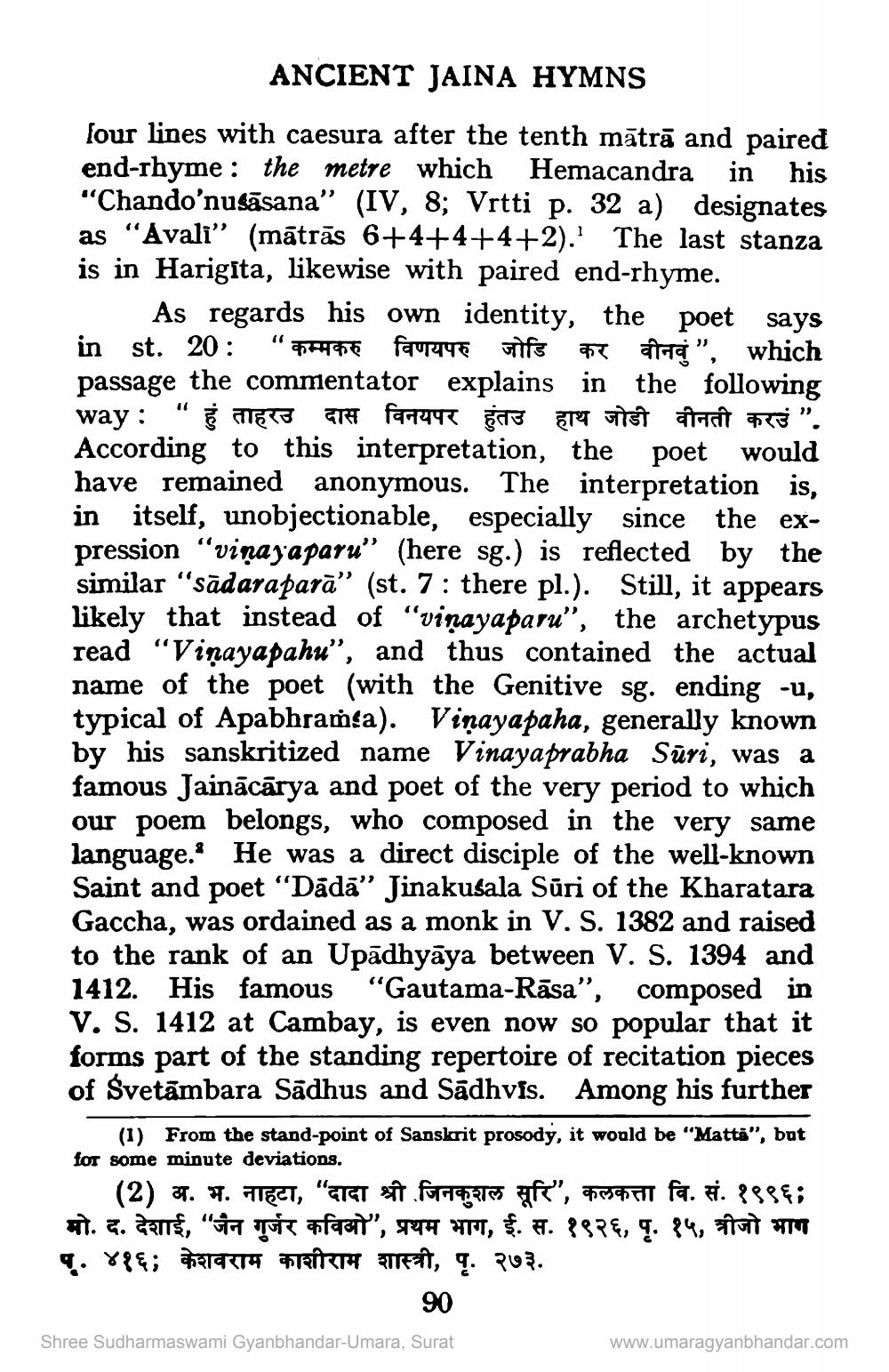________________
ANCIENT JAINA HYMNS four lines with caesura after the tenth mātrā and paired end-rhyme: the metre which Hemacandra in his "Chando'nusāsana" (IV, 8; Vrtti p. 32 a) designates as "Avali” (mātrās 6+4+4+4+2). The last stanza is in Harigita, likewise with paired end-rhyme.
As regards his own identity, the poet says in st. 20: "541976 faurent wifs fara", which passage the commentator explains in the following way: “ TIETO ar fanya gas T 15T tacit #3 ". According to this interpretation, the poet would have remained anonymous. The interpretation is, in itself, unobjectionable, especially since the expression "viņaya paru" (here sg.) is reflected by the similar "sādaraparā" (st. 7: there pl.). Still, it appears likely that instead of "vinayaparu", the archetypus read "Vinayapahu”, and thus contained the actual name of the poet (with the Genitive sg. ending -u, typical of Apabhrama). Viņaya paha, generally known by his sanskritized name Vinayaprabha Sūri, was a famous Jainācārya and poet of the very period to which our poem belongs, who composed in the very same language. He was a direct disciple of the well-known Saint and poet “Dādā” Jinakusala Sūri of the Kharatara Gaccha, was ordained as a monk in V. S. 1382 and raised to the rank of an Upādhyāya between V. S. 1394 and 1412. His famous “Gautama-Rāsa", composed in V. S. 1412 at Cambay, is even now so popular that it forms part of the standing repertoire of recitation pieces of Svetāmbara Sadhus and Sadhvis. Among his further
(1) From the stand-point of Sanskrit prosody, it would be "Matta", but for some minute deviations.
(2) 3. H. HIECT, "ETCT sft foragaros ofe", posao ut fa. #.8888; 1. g. du, "* To afaat', TT TT, $. 7. 887€, 9. 84, T m 4. 88&; meracru ARKA TĪ, q. 203.
90
Shree Sudharmaswami Gyanbhandar-Umara, Surat
www.umaragyanbhandar.com




